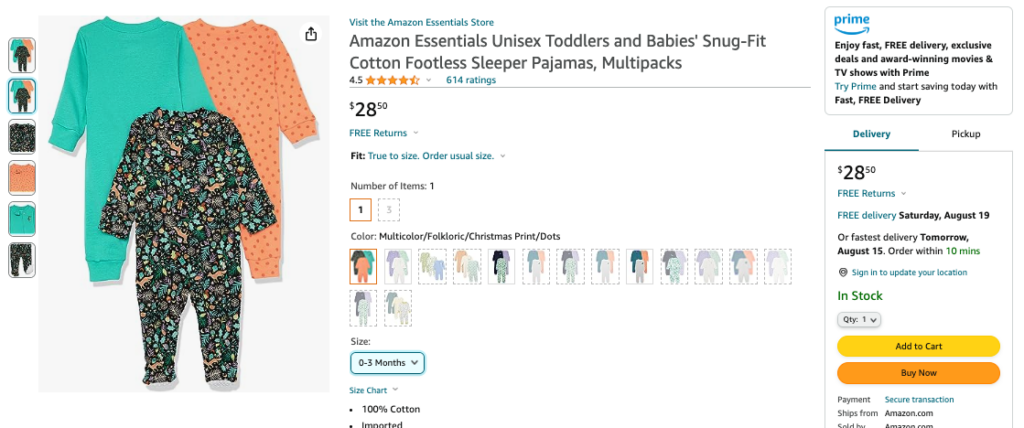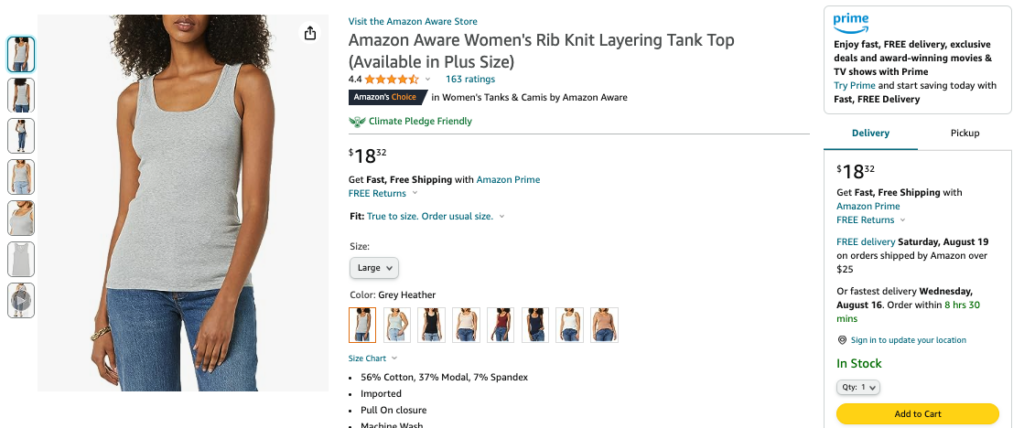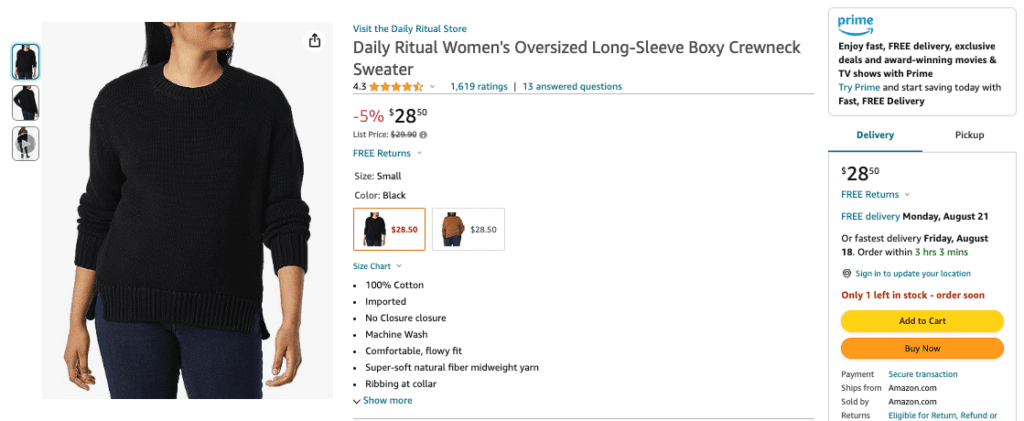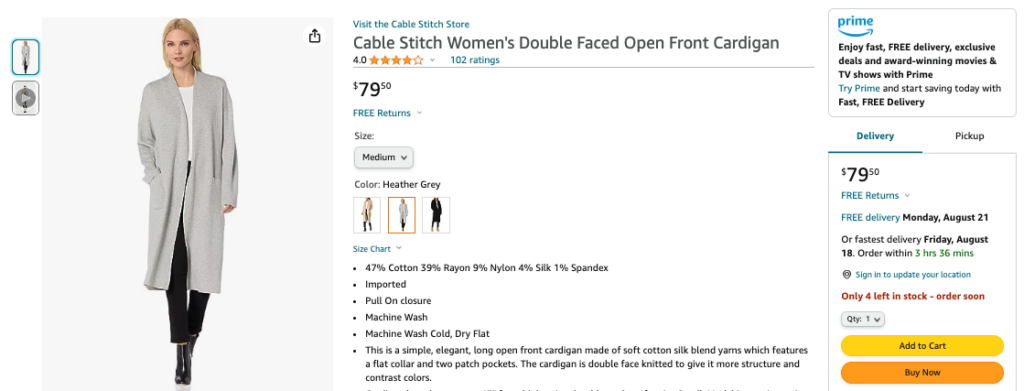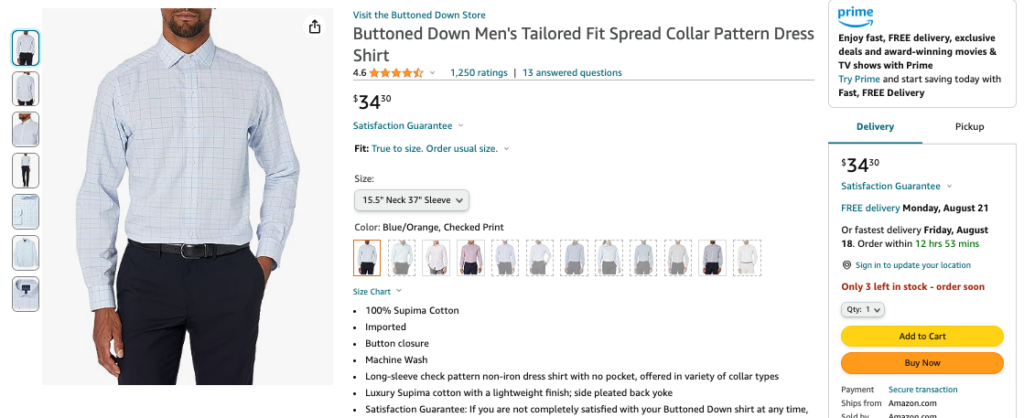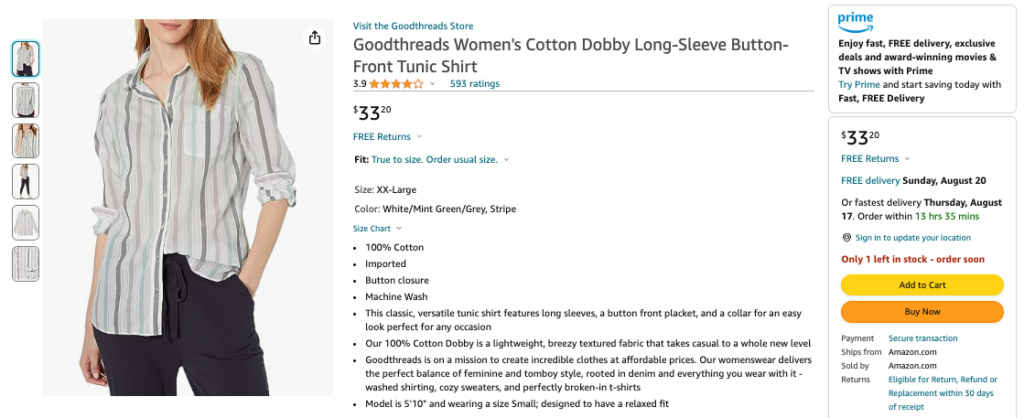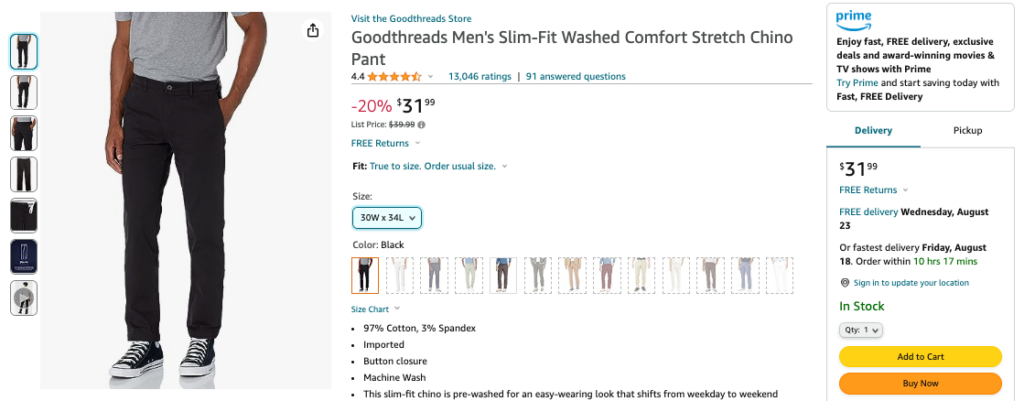News recently broke that Amazon plans to eliminate some of its private label brands as part of cost-cutting measures. The change also seems to be in response to concerns over Amazon’s competitive practices, which have resulted in a potential antitrust lawsuit from the FTC.
While Amazon has not shared which private label brands will get the axe, the company’s private label apparel brands are among those expected to be significantly reduced. With thousands of Amazon brand products in the apparel category, this could open up opportunities for competitors to grow market share, sales, and revenue.
To find out just how much this could alter the competitive landscape on Amazon, we analyzed Jungle Scout Cobalt data for several of Amazon’s private label apparel brands.
Amazon’s private-label apparel brands
Cobalt data shows that there are tens of thousands of Amazon private label products in the apparel category. The brands selling these products range from specialty lines – like Core 10, which specializes in women’s athleisure apparel – to some of Amazon’s most recognizable private labels, such as Amazon Essentials.
But which of these private label brands are likely to get cut, and how will their absence shift the apparel market on Amazon? Let’s first take a look at private label brands that span multiple sub-categories, including men’s wear, women’s apparel, and clothing for infants and children.
Amazon Essentials
Amazon Essentials is one of Amazon’s largest private label brands, with thousands of products in the clothing category, including women’s, men’s, children’s, and baby apparel. Although the brand’s sales are down year-over-year, it has still raked in an astonishing $2+ billion dollars in revenue since last August.
A recent statement from Amazon’s Vice President of Private Brands suggests that Amazon Essentials is not likely to be on the chopping block for the upcoming cuts:
“We always make decisions based on what our customers want, and we’ve learned that [they] seek out our biggest brands – like Amazon Basics and Amazon Essentials – for great value with high-quality products at great price points.” – Matt Taddy, VP of Amazon Private Brands
However, as other Amazon private label brands fade out, the brand’s product catalog could change and even expand. Some products in Amazon brand Goodthreads’ catalog, for example, have already shifted to the Amazon Essentials name.
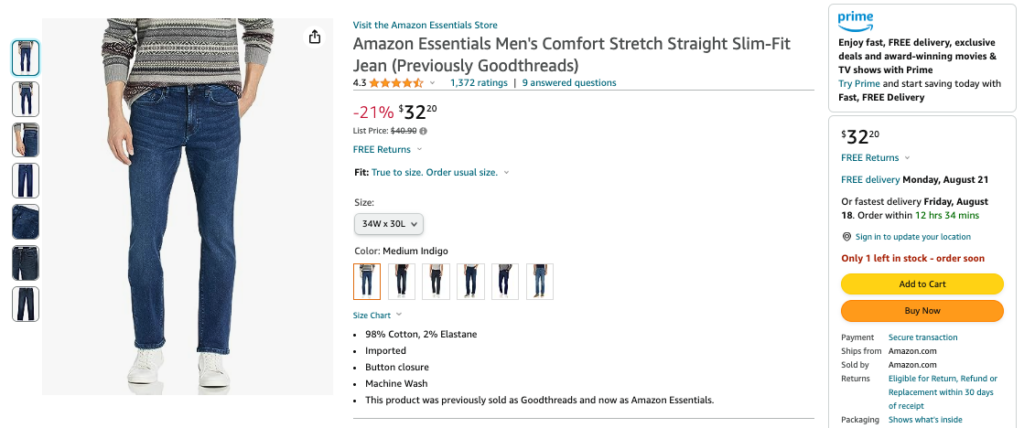
Amazon Essentials: Women’s Apparel
In the women’s apparel category, Amazon Essentials lists more than 16,000 products. Revenue for the brand is down 10% year-over-year in this market, but unit sales have remained steady, declining less than 1% year-over-year.
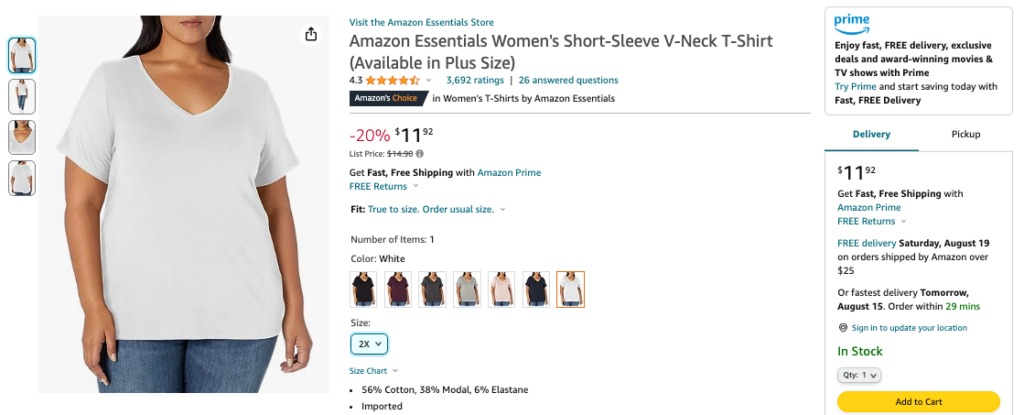
Over the last six months, revenue for this Amazon Essentials women’s t-shirt has grown by 255%.
Competitors
Here’s a closer look at some of the brands that are competing with Amazon Essentials for high-volume keywords in the women’s apparel category.
| Keyword | Top Brands (% SOV) |
| Women’s cardigan |
|
| Women’s t-shirts |
|
| Women’s tank tops |
|
Note: % SOV represents the percentage of share of voice that each brand owns for the specified keyword.
Amazon Essentials: Men’s Apparel
Amazon Essentials products in the men’s apparel category more than double the number of offerings for women’s apparel. Both revenue and unit sales are down (by 14% and 17%, respectively) for Amazon Essentials menswear year-over-year, but some products are still seeing significant growth.
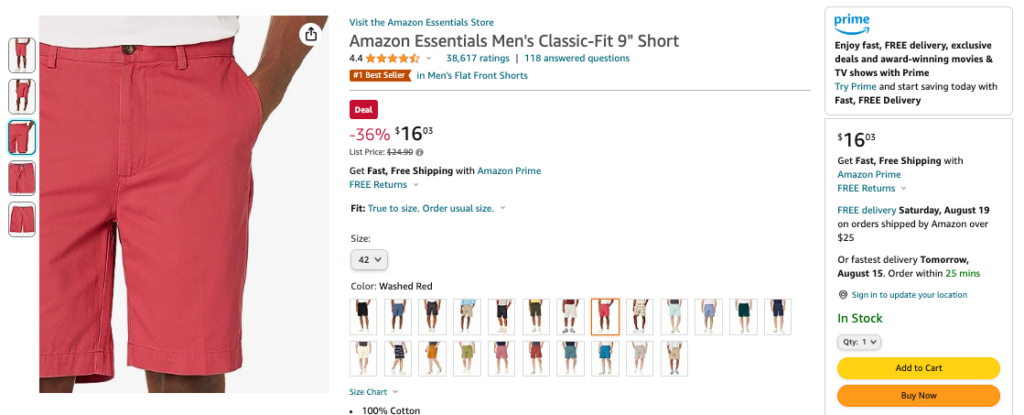
Since February, revenue for these men’s shorts by Amazon Essentials has grown 480%.
Competitors
Here’s a closer look at some of the brands that are competing with Amazon Essentials for high-volume keywords in the men’s apparel category.
| Keyword | Top Brands (% SOV) |
| Men’s shorts |
|
| Men’s t-shirts |
|
| Men’s chinos |
|
Note: % SOV represents the percentage of share of voice that each brand owns for the specified keyword.
Amazon Essentials: Children’s Apparel
In Children’s Apparel, Amazon Essentials has over 8,000 products. Although some of these products are experiencing impressive revenue growth, overall sales and revenue are down year-over-year for Amazon Essentials’ children’s apparel (by 17% and 26%).
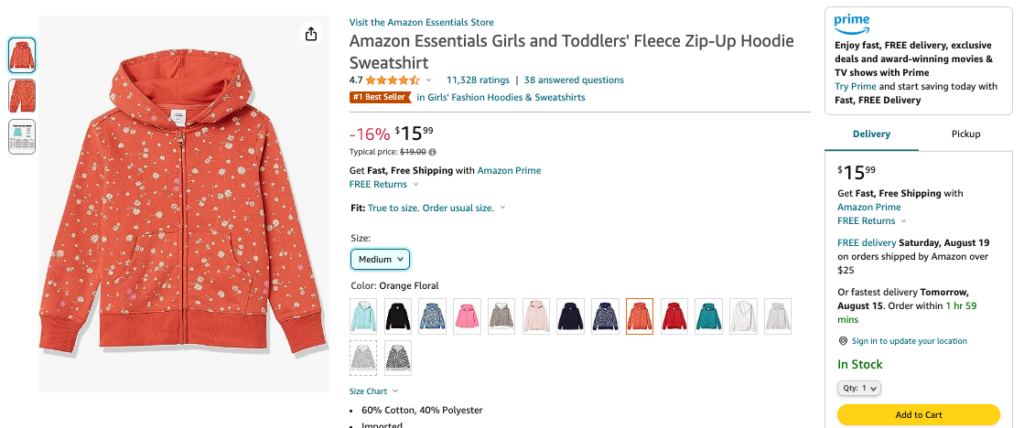
Revenue for this Amazon Essentials kids’ sweatshirt has increased by 284% in the last six months.
Competitors
Here’s a closer look at some of the brands that are competing with Amazon Essentials for high-volume keywords in the children’s apparel category.
| Keyword | Top Brands (% SOV) |
| Kids’ pajama sets |
|
| Kids’ t-shirts |
|
| Kids’ hoodie |
|
Note: % SOV represents the percentage of share of voice that each brand owns for the specified keyword.
Amazon Essentials: Baby Apparel
Of all of the markets that Amazon Essentials sells clothing in, baby apparel has seen the largest year-over-year decline in sales (28%) and revenue (33%) for the brand’s 1,400+ products in this market.
Over the last six months, revenue for this multipack of Amazon Essentials pajamas for babies has grown by 788%.
Competitors
Here’s a closer look at some of the brands that are competing with Amazon Essentials for high-volume keywords in the baby apparel category.
| Keyword | Top Brands (% SOV) |
| Baby shorts |
|
| Newborn shirts |
|
| Footed pajamas |
|
Note: % SOV represents the percentage of share of voice that each brand owns for the specified keyword.
See more data on product trends and industry influences in the Baby Products category.
Smaller Amazon private label apparel brands
Most likely to get the chop are Amazon’s more niche private label apparel brands. These brands have smaller numbers across the board – from sales and revenue to product listings.
Amazon Aware
Amazon Aware specializes in climate-friendly products. The brand extends beyond the apparel category, offering household essentials, beauty products, and more. Within the clothing category, Amazon Aware offers over 2,300 products for men, women, children, and babies. Both sales and revenue have significantly jumped for Amazon Aware in the last year: Sales are up 124% and revenue has grown 69%. The brand also holds a majority of the market share for eco-friendly clothing. It’s worth noting, however, that other brands are gaining incredible traction in this niche, with some growing their market share by more than 700% in the last year.
Among the most popular Amazon Aware apparel over the last 6 months is this women’s rib knit tank top, for which revenue has grown 511%.
Which brands are competing with Amazon Aware?
Here are some of the top brands competing in Amazon’s market for eco-friendly and sustainable clothing:
Eco-friendly clothing: Top brands by market share
- Amazon Aware (58%)
- Chaps (8%)
- Avidlove (6%)
- Monfoot (5%)
- Calvin Klein (2%)
28 Palms
Amazon brand 28 Palms offers tropical resort wear for men and women, from colorful Hawaiian shirts to flowy vacation-vibe dresses. Sales and revenue trends for this brand over the past 12 months suggests it could be up for elimination as Amazon scales back on private label. Although the size of the brand’s catalog is comparable to Amazon Aware and others at over 3,000 products, revenue and sales have decreased more than 70% – perhaps due to de-prioritization from Amazon as they work to clear inventory.
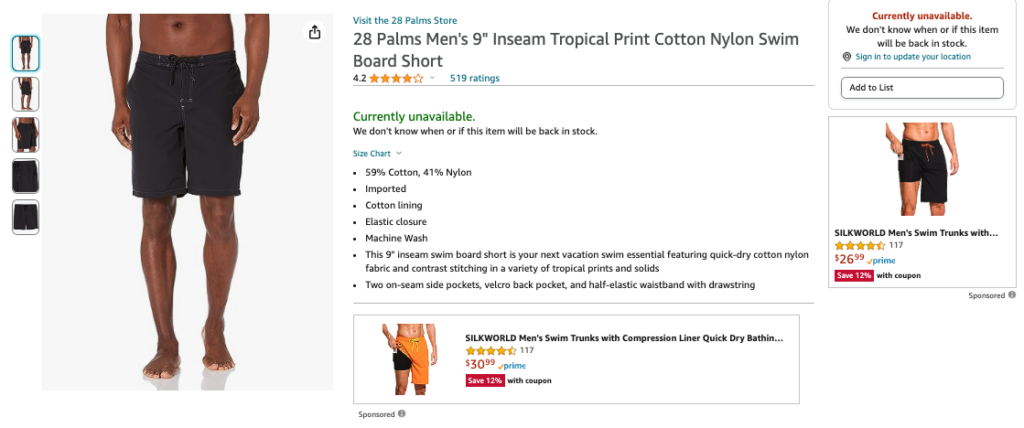
In the last 6 months, these 28 Palms board shorts have gone out of stock, and revenue has dropped by more than 75%.
Which brands are competing with 28 Palms?
Here are some of the top brands that are competing in Amazon’s resort wear market:
Women’s resort and vacation wear: Top brands by market share
- King Kameha (21%)
- Chuntianran (7%)
- Pinziko (6%)
- Chicgal (2%)
- Lammertree (2%)
Men’s resort and vacation wear: Top brands by market share
- Coofandy (25%)
- Tropical Storm (18%)
- Vatpave (13%)
- Alimens & Gentle (9%)
- Aptro (7%)
Mae
Mae is Amazon’s private label brand specializing in women’s sleepwear, bras, and underwear. This is another brand that could be on its way out: while it used to have over 6,000 products listed, its available catalog now appears to be down to less than 2,000. Sales and revenue are also down more than 80% this year.
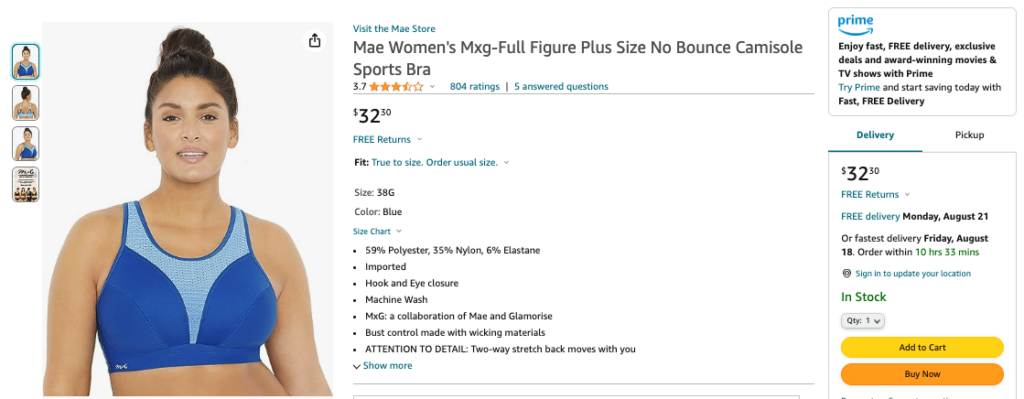
In the last 6 months, revenue for this Mae sports bra has dropped 90%.
Which brands are competing with Mae?
Here are some of the top brands competing for sales and visibility in the women’s sleepwear and underwear markets:
Women’s sleepwear: Top brands by market share
- Real Essentials (56%)
- Lazy One (11%)
- Sleepyheads (9%)
- Ekouser (4%)
- Hanes (4%)
Bras: Top brands by market share
- Bali (21%)
- Vanity Fair (12%)
- Warner’s (10%)
- Calvin Klein (9%)
- Maidenform (9%)
Women’s underwear: Top brands by market share
- Fruit of the Loom (10%)
- Jockey (9%)
- Hanes (8%)
- Amazon Essentials (6%)
- Wirarpa (4%)
Core 10
Core 10 focuses on women’s athleisure, including products like sports bras, yoga shirts, and joggers. It has a catalog of over 1,000 ASINs currently available in the women’s apparel category. In the last year, revenue for Core 10 has grown by 27% and sales are up 41%.
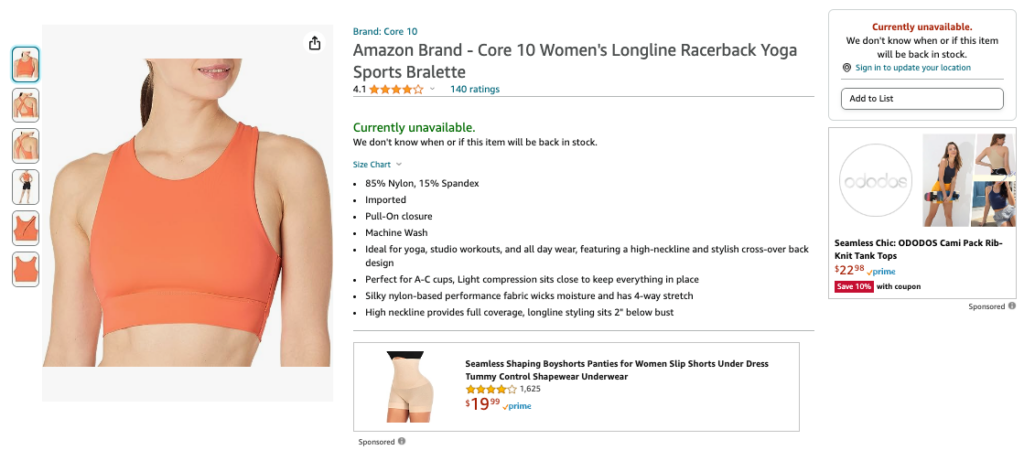
This racerback sports bra was one of Core 10’s most popular products over the last 6 months, with revenue growing more than 160% during that time.
Which brands are competing with Core 10?
Here are some of the top brands competing in the women’s athleisure apparel market on Amazon:
Women’s athleisure: Top brands by market share
- Columbia (8%)
- Baleaf (6%)
- Cadmus (6%)
- Under Armour (5%)
- Neleus (4%)
Daily Ritual
Daily Ritual offers more than 6,000 products in women’s casual clothing. Its catalog includes apparel like sweatshirts, lounge pants, and cardigans. Sales and revenue for Daily Ritual have grown modestly (by 8% and 4%) over the last year, and while some of the brand’s products are seeing revenue growth, it’s rumored to be one of the brands on its way out.
Revenue for this Daily Ritual crewneck sweater grew by more than 660% in the last six months.
Which brands are competing with Daily Ritual?
Here are some of the top brands competing in the women’s casual wear market on Amazon:
Women’s casual wear: Top brands by market share
- Nirovien (12%)
- Buenos Ninos (9%)
- Anrabess (6%)
- Prettygarden (5%)
- Automet (5%)
Cable Stitch
Cable Stitch is one of Amazon’s coziest private label brands, offering over 1,500 sweaters and items of cable knit clothing for women. This is another brand to keep an eye on as Amazon reduces its private label footprint, as sales and revenue have each declined by about 60% in the last year.
While Cable Stitch’s overall sales and revenue are down, some of its products are still showing traction. Revenue for this cardigan, for example, has grown 97% in 6 months.
Which brands are competing with Cable Stitch?
Here are some of the top brands competing in Amazon’s market for women’s sweaters:
Women’s sweaters: Top brands by market share
- V28 (6%)
- Anrabess (6%)
- Evaless (5%)
- Zesica (5%)
- Merokeety (5%)
Buttoned Down
Buttoned Down is Amazon’s private label brand for men’s dress clothing. Although the brand has a catalog of over 6,000 products, it also has some of the steepest declines in sales and revenue over the last 12 months. Both have fallen 82% year-over-year.
Revenue for this Buttoned Down men’s dress shirt has taken a substantial hit, shrinking by 62% in the last 6 months.
Which brands are competing with Buttoned Down?
Here are some of the top brands competing in the men’s dress shirts market on Amazon:
Men’s dress shirts: Top brands by market share
- Van Heusen (49%)
- Calvin Klein (15%)
- Alimens & Gentle (11%)
- Zeroyaa (10%)
- Coofandy (4%)
Goodthreads
Goodthreads is another of Amazon’s private label apparel brands that is reportedly being cut. It offers mid-level casual and professional clothing for both men and women.
Goodthreads: Women’s Apparel
Sales of Goodthreads’ women’s apparel are down 15% year-over-year, and revenue is down 20%.
This tunic shirt is one of the top-selling Goodthreads products in women’s apparel over the last 6 months, with revenue increasing by 160% during that period.
Goodthreads: Men’s Apparel
Unlike the brand’s women’s clothing, Goodthreads’ men’s apparel has experienced slight revenue and sales growth over the last year, each increasing by 6%.
Revenue for many of Goodthreads’ men’s apparel products has remained fairly steady over the last 6 months. Revenue for these chino pants, for example, has grown just 5% during that time.
Who is competing with Goodthreads?
Here are some of the top brands that are competing against Goodthreads in key apparel markets on Amazon:
Women’s cardigans: Top brands by market share
- Grace Kerin (19%)
- Amazon Essentials (12%)
- Merokeety (10%)
- Goranbon (5%)
- Yibock (5%)
Men’s chinos: Top brands by market share
- Goodthreads (44%)
- Dockers (18%)
- Levi’s (17%)
- Amazon Essentials (13%)
- Tommy Hilfiger (2%)
Opportunities for apparel brands and retailers
Amazon’s private label expansion has faced scrutiny from other brands and retailers for quite some time, with questions about what Amazon brands mean for the platform’s competitive landscape. The news that Amazon is cutting back on private labels reduces some of this friction and presents opportunities for brands that are competing with Amazon in categories like apparel.
As Amazon’s private label apparel brands face reductions, competitors have a chance to seize market share, boost sales, and drive revenue. The reconfiguration of the competitive landscape offers a fresh opportunity for brands to strengthen their presence, offer unique value propositions, and capture the attention of consumers.
About this report
The product data in this report is representative of the U.S. Amazon market. Market insights on Amazon products were sourced from Jungle Scout Cobalt, an industry-leading market intelligence, advertising optimization, and ecommerce reporting platform powered by nearly 2 billion Amazon data points. Year-over-year comparison data reflects the period of August 12, 2022 – August 12, 2023, as compared to the period of August 11, 2021 – August 11, 2023. 6 month trends data reflects the 6 months leading up to August 12, 2023. ASIN counts reflect the total number of available products for the specified brand within the specified category as of August 12, 2023.
We encourage you to share, reference, and publish this report’s findings with attribution to “Jungle Scout Cobalt” and a link to this page.
For more information, specific data requests, media assets, or to reach the report’s authors, please contact us at [email protected].

 No Comments
No Comments